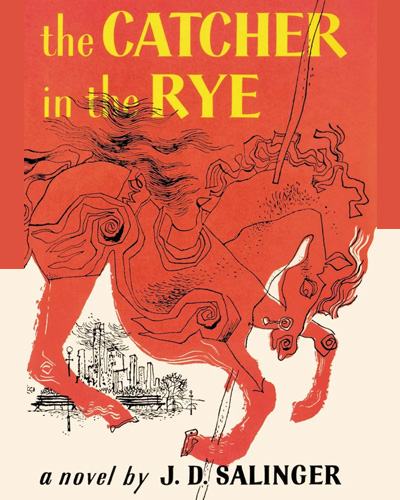Dive into the world of Holden Caulfield, a 16-year-old misfit, as he navigates through the complexities of adolescence in J.D. Salinger’s classic novel, The Catcher in the Rye. This review will explore the book’s themes, characters, and significance in modern literature.
Synopsis
The Catcher in the Rye tells the story of a few days in the life of Holden Caulfield, a teenage boy who has been expelled from his prep school, Pencey Prep. Set in the 1950s, the novel follows Holden as he wanders around New York City, trying to make sense of the adult world that he finds phony and superficial. Along the way, he encounters a variety of people, some of whom challenge his beliefs and force him to confront his own hypocrisy and fears about growing up.
Characters
Major Characters:
- Holden Caulfield: The troubled protagonist and narrator of the story who struggles with feelings of alienation and the transition to adulthood.
- Phoebe Caulfield: Holden’s younger sister, who represents innocence and purity in the novel.
- Sally Hayes: A girl Holden briefly dates, who embodies the superficiality and phoniness he despises.
- Allie Caulfield: Holden’s deceased younger brother, whose death has a profound effect on his mental state.
Supporting Characters:
- Mr. Antolini: A former teacher and family friend who tries to offer Holden guidance.
- Carl Luce: A former classmate of Holden’s whose maturity and cynicism challenge Holden’s views.
- Jane Gallagher: A childhood friend of Holden’s who serves as a symbol of his idealized past.
Themes and Symbolism
Themes:
- Alienation and loneliness: Throughout the novel, Holden struggles with feelings of isolation and seeks connection with others.
- Loss of innocence: Holden’s desire to protect children from the harsh realities of the adult world is a central theme.
- Phoniness in society: Holden’s disdain for the superficial nature of the adult world is a recurring motif.
- The struggle for identity: As he grapples with adolescence, Holden attempts to find his place in the world.
- Mental health: The novel raises questions about Holden’s mental state and the impact of trauma on his psyche.
Symbolism:
- The red hunting hat: A symbol of Holden’s unique identity and his desire to stand out from the crowd.
- The ducks in Central Park: A metaphor for Holden’s curiosity about change and the uncertainty of life.
- The Museum of Natural History: A representation of Holden’s longing for stability and the preservation of innocence.
- The title itself: The Catcher in the Rye refers to Holden’s desire to protect children from the adult world and the loss of their innocence.
Literary Significance and Impact
The Catcher in the Rye is considered a quintessential coming-of-age novel, capturing the struggles of adolescence and the search for identity. Since its publication, the novel has been both praised and criticized for its language, themes, and portrayal of teenage rebellion. Despite being challenged in schools and libraries due to its controversial nature, The Catcher in the Rye has had a lasting impact on modern literature and popular culture, influencing countless writers and artists.
Personal Reflection
As a reader, I found myself connecting to Holden Caulfield’s feelings of confusion and alienation during adolescence. His struggle to find his place in the world and make sense of the adult realm resonated with me. The Catcher in the Rye has had a lasting impact on my perspective, reminding me of the importance of authenticity and compassion towards others.
Conclusion
In conclusion, J.D. Salinger’s The Catcher in the Rye is a powerful exploration of adolescence, identity, and the complexities of the human experience. Through its memorable characters, poignant themes, and rich symbolism, the novel has earned its place as a classic in modern literature. I highly recommend this book to anyone seeking a thought-provoking and emotional journey into the mind of a troubled teenager.
References:
